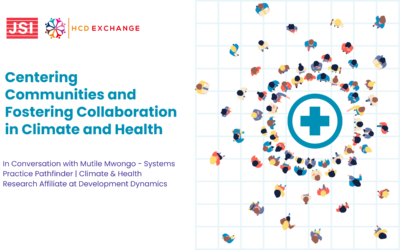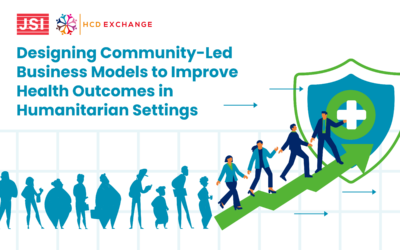The integration of Monitoring, Learning, and Evaluation (MLE) into Human-Centered Design (HCD)-led public health programs has progressed significantly in recent years. However, there remains a need for continued efforts to strengthen this integration. While there is valuable learning about approaches to strengthen this integration, it is also important to understand the key stakeholders involved in making this integration a success – the MLE Expert and the Designer – and the dynamics between them. This article delves into this relationship from the lens of a MLE expert who has worked closely with designers.
To unpack the relationship between MLE experts and designers, it is essential first to provide some context on integrating MLE within HCD-led public health programs. Challenges often arise from a misalignment of approaches and a need for more effective integration. For instance, during the prototyping phase of the HCD process, designers frequently make rapid iterations to their solution concepts without adequately documenting these changes. Design-led programs prioritize developing, testing, and refining prototypes to select the most effective solution. However, the lack of documentation during this process poses a significant challenge for MLE. MLE aims to capture the entire process to ensure all changes are accounted for, clarifying how the solution was developed, what decisions were made, and what lessons were learned along the way. When decisions and iterations occur in the design process, there should be metrics to measure these changes, which are often absent in design-led projects. An excellent example of successful MLE and HCD integration is adaptive implementation, which involves continuously evaluating the quality of implementation based on its responsiveness to the needs of the target population and making refinements accordingly.
The root of the misalignment between these key stakeholders lies in their differing objectives. MLE experts focus primarily on assessing what works and what doesn’t, while design experts are solution-oriented, aiming to refine the solution. While this is likely true, there are instances where teams have successfully integrated these roles. To improve effectiveness, both sides need to understand each other’s needs—designers should appreciate the importance of MLE and metrics, while MLE experts need to understand the fast-paced nature of design iterations.
It’s also beneficial to recognize the different contexts from which these two fields originate. Design has historically been used in the corporate or for-profit world, where the focus is primarily on the output or solution. As designers transition into the development sector, shifting this mindset can be challenging without a supportive environment. In contrast, MLE is deeply rooted in the development sector, where the emphasis is on generating evidence. From an MLE perspective, all data should be accessible, and every decision and piece of information must be documented. MLE experts often say, “if it isn’t documented, it never happened.” Designers, however, may have limited understanding of measurement priorities because design, as a field, typically does not emphasize that aspect.
To ensure an effective working relationship between MLE experts and designers, clarity on the collaboration should be defined from the beginning. MLE experts need a thorough understanding of the HCD process, while designers need to grasp the measurement and metrics required of the project. This clarity should be established at the project’s outset. MLE experts should also support designers in ensuring that they document changes and the decisions behind those changes. Additionally, MLE experts should help designers understand the importance of MLE in projects and how generated evidence can be used to showcase the project’s performance. Thorough documentation is crucial, as it captures lessons learned from past experiences. A clear record of what has and hasn’t worked provides valuable insights, especially in design-led projects where iteration is critical. Adequate documentation also strengthens the link between outcomes and impact, better demonstrating the success of the design process.
A practical example of fostering this collaboration can be seen in the work of HCDExchange, where the integration of MLE and design has been approached through a collaborative and inclusive process. By involving designers and MLE experts from the outset in developing project metrics and performance monitoring plans, the team has created a shared understanding and ownership of the evaluation framework. Regular data review sessions, where designers and MLE experts come together to analyze and discuss findings, have proven to be instrumental in bridging gaps and ensuring that the insights generated are actionable and aligned with the project’s objectives. This iterative feedback loop not only strengthens the quality of MLE but also helps designers appreciate the role of evidence in refining and scaling solutions.
In conclusion, collaboration between MLE and design is essential. It is valuable to work together and find equilibrium, where both stakeholders—the MLE expert and the designer—understand each other’s expectations. As an MLE expert, helping designers understand metrics by collaboratively developing them fosters a sense of ownership among the designers. It is crucial to remember that MLE is conducted not as a supervision role, but to support the project and highlight its achievements and outcomes.
This article was written by Peter Nasokho, Evidence and Metrics Lead at the HCDExchange.
He oversees the implementation and documentation of activities that support the HCDExchange strategy. He focuses on enhancing data utilization and generating evidence to demonstrate its performance and impact.
(Edited by Rimjhim Surana and Belindar Kwamboka)




